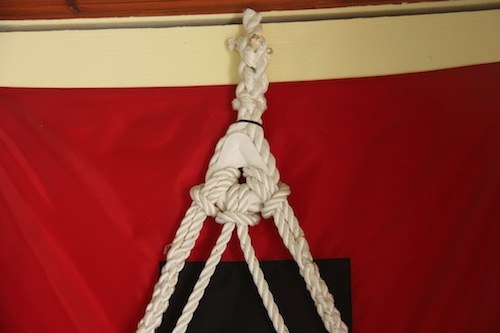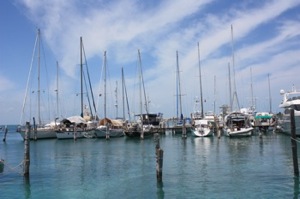
As commuter cruisers, leaving our 37’ sailboat for six months a year in other countries, we learned the importance of properly preparing the galley to leave the boat. (Note: this post first appeared as a guest post on The Boat Galley, click here for that link.)
Sooner or later, even if you’re a full time cruiser, you’ll need to leave the boat for more than just a weekend. In order to return to a boat with no “gypsies in the palace” … whether it be rats, mice, cockroaches, annoying ant infestations or other unwelcome surprises, it’s imperative to properly prepare the galley. After all, the galley is the area most likely to attract unwelcome attention. Use these ideas to help.
Safety Issues: Turn the propane off at the tank after “bleeding the propane” from the lines. If you don’t do this every time you use the stove, and you should, here’s the process. First use the stove, then leave the burner burning and turn the propane off at the solenoid. Wait until the flame goes out – this insures there isn’t any propane left in the lines. Then turn the propane off at the tank and actually disconnect the tank from the boat.
Preparing the Galley. Remember that all uninvited visitors are looking for one thing .., a food source. If you don’t provide it, they won’t come.
The first step in preparing the galley is to get rid of anything that might offer food.
When we first left our sailboat in the Rio Dulce, Guatemala, we were ruthless. We got rid of EVERYTHING aboard that had anything to do with food. We donated everything to a local food bank, which although it seemed wasteful at the time, beat literally throwing it in the trash.
We included every can of food, every spice, every bottle of rum, literally everything no matter what the packaging. Make no mistake, a determined rat can chew through just about anything, including floorboards to get to anything it thinks might be edible below. We had friends that accidently left food under their floorboards when they left the boat on the hard in LaCeiba Boatyard, Honduras to fly home for the holidays. They returned to a complete mess. Get rid of everything!
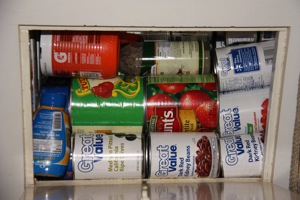 Back in the US, we are a little complacent, leaving any remaining heavy tin cans in a side compartment behind a settee. We probably should get rid of them too, but as I said, we’re getting complacent.
Back in the US, we are a little complacent, leaving any remaining heavy tin cans in a side compartment behind a settee. We probably should get rid of them too, but as I said, we’re getting complacent.
The question arises, what to do when you’ll just be gone for a month for the holidays. The steps are similar, but we have shrink wrap meats in the freezer as well as our baking supplies, pasta and other food in our storage compartments – always inside our large plastic storage containers, but those will not hold up if we were invaded. Friends down the dock last winter after the holidays returned to a rat aboard. If you don’t want surprises, get rid of everything, even if you’ll only be gone for a couple of weeks. We don’t do this, but after the experience down the dock last winter, we might do things differently this year!
But getting all the food off the boat is only the beginning, here are a few more critical steps:
- Clean, clean, clean. After living aboard for six months, even though we maintain relatively clean living quarters, there are always crumbs, sticky residue from that glass of spilled lemonade wedged in a floorboard crack, the oven, the stovestop, anywhere there was food, there’s the potential of “leftovers” enough to attract unwanted attention. I wash every compartment that’s had any type of food out with a bleach water solution and leave the compartment doors open to let it dry, and then leave them open while we’re gone just to facilitate airflow.

- Don’t forget to defrost and then scrub the refrigerator as well as wipe out compartments that contain only storage containers or pots and pans. And it goes without saying to make sure all those pots and pans are scrubbed clean.
- Another often overlooked area is to wash all the towels, oven mitts, potholders, anything with any contact with food. Leave no trace!
- The next step is to empty ALL trash off the boat. Keep in mind, critters enjoy a good mess. Whether it’s food related or anything, if it’s a big mess, you risk uninvited critters so thoroughly examine unsuspected places, for us, it’s the sail locker and under the Pullman berth.
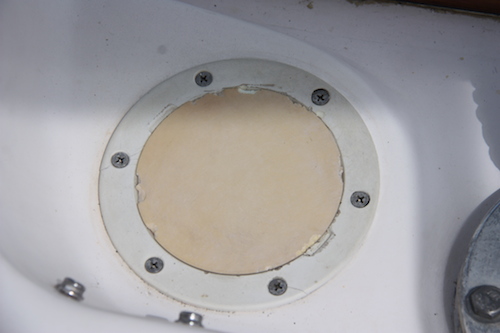
- Then take steps to uninvite any last minute opportunists that might try to nose aboard anyway by eliminating any access from outside. Close the seacocks and make sure there are screens across any ventilation that you’ll be leaving open while you’re gone. Dorades are a prime source of access to the boat, screens work. Make sure areas away from the galley are closed to access as well, one of the primary access areas can be around the windlass/chain locker.

- And finally, just before you lock up and walk away, place deterrents around – we use both roach and ant bait hidden in dark corners, most are used in the galley – under the sink, inside every food storage locker, the fridge, the freezer, the cooler, anything. We also place these inside any compartment in the rest of the boat that had any food storage, including beverages. When we couldn’t buy actual “baits” outside the US, borax works well. We simply saved plastic bottle caps and filled them with borax powder that we purchased from the local farmacia. Some cruisers prefer to mix it with coffeemate to attract bugs, we just left ours plain.
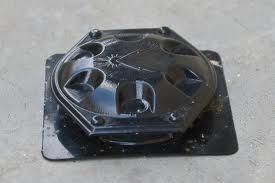 After last winter’s surprise, some boats we know added rat guards to their lines when they left the boat this year. Because we leave all our lines doubled and the boat in a spiderweb cocoon prepared for hurricane season, David decided that having sealed all the access points to inside the boat, the only thing the rats could do was run around on deck and there’s nothing there for them. I’m hoping when we return to the boat in October that his solution was the right one!
After last winter’s surprise, some boats we know added rat guards to their lines when they left the boat this year. Because we leave all our lines doubled and the boat in a spiderweb cocoon prepared for hurricane season, David decided that having sealed all the access points to inside the boat, the only thing the rats could do was run around on deck and there’s nothing there for them. I’m hoping when we return to the boat in October that his solution was the right one!
Caretaker. If we’re going to be gone for six months, we never leave without finding someone as a paid caretaker. The responsibilities can be as extensive or as minimal as you want, but having someone look below every week, or every couple weeks can minimize the time any uninvited guests have to exploit their welcome. We ask that our caretaker carefully examine for evidence of rats, mice, cockroaches and other insects.
With proper preparation, you should never have a problem with uninvited critters aboard. Knock on teak, we’ve never had anything worse than an ant infestation in the engine compartment of all places in the 13 years and 15,000 miles we’ve been commuter cruising, six months at a time.















